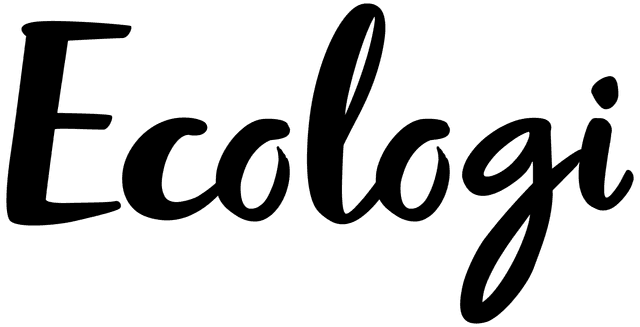)
There's a yearly groundswell of noise that fills my inbox... scrolls endlessly past my eyes and is recommended to me by anyone and everyone. No, it's not the latest much-watch show on subscription channel I've never heard of but those pesky graphic design 'trends' that are flaming hot and must-haves. I've been around the block and it's hard to take it all seriously. It'll be here and then it'll be gone and something else will take its place and that will be even better, and what was so desired yesterday will be in the designer dustbin of 'stuff' we've all forgotten.
You're here to see what's in and cool. Maybe you're a designer looking for inspiration and a shortcut past the blankpageitis we all suffer from time to time (there's a cream you can put on that). I've done some of the hard work for you and looked through umpteen lists and can honestly say they're all different (there are 300M results returned on google alone).
There must be hundreds of trends that are current for 2024 so by definition they're not really, are they? Just more darts thrown blindly in the dark in the hope of standing out amongst the rubble. They're mainly styles that are mildly interesting for a moment in time for us to scan and move on with or to feast on/reappropriate and regurgitate in a slightly different post-modern splat.
Here's the stuff I like, found interesting, or hated so much that I think I'll probably like it in a few months' time.
AI imagery
The use of artificial intelligence (AI) in graphic design is a significant trend shaping the industry. AI is increasingly integrated into design processes, offering benefits such as automated content generation, enhanced creativity, and improved image editing. These tools can assist designers in tasks such as suggesting colours, creating patterns, and expediting the design process.
This integration should be seen to streamline workflows and enhance creativity, rather than as a replacement for human designers. The impact of AI on graphic design is expected to continue to grow, with AI becoming a powerful ally for designers, aiding in the creation of quick layouts, imagery generation, and colour palette selection.
However...
Anti-AI imagery (The backlash)
We all know AI generated imagery is slowly stagnating the cultural pond we swim in. Have you been in the Adobe stock library recently? It's hard not to be drawn in by that perfect shot until you look a little closer and then you get struck by a feeling of unease... like being in the Stepford Wives film. Just unsettling, though great for a quick fix should you need it.
The backlash against AI art and design is multifaceted, encompassing concerns about the devaluation of human creativity, ethical implications, and the perceived threat to the traditional artistic process.
Artists have criticised AI-driven image generation tools for being trained on human-made art scraped from the web, which they see as degrading and undermining their own work. Some individuals argue that AI art lacks the emotional and expressive depth that is inherent to human-created art, emphasising the importance of human creativity and soul in the artistic process.
Additionally, there are ethical concerns related to the use of AI-generated art, including issues of attribution and the potential devaluation of original human-created artwork. The integration of AI in art and design has sparked a complex and ongoing debate about its impact on the traditional artistic landscape.
Maximalism
Maximalism in graphic design is a trend characterized using vibrant colours, intricate patterns, and multiple textures. It embraces excess, celebrates the unconventional, and often takes inspiration from art movements such as Pop Art, Art Nouveau, and Surrealism. Maximalist designs feature a collage-like aesthetic, combining various elements to create a visually striking composition.
After years of minimalism in web design in particular, this trend is an anti-minimalist movement that centres around the idea that "more is more" and is gaining popularity as a bold and dynamic approach to design.
Natural elements
The natural elements graphic design trend encompasses nature-inspired design elements, natural colour palettes, organic shapes, and natural textures. It aims to bring an organic feel to designs, conveying a sense of calm and tranquillity.
This trend is characterized by earthy tones, handmade illustrations, and a deep connection to nature, resonating with the serenity and authenticity of the great outdoors.
It is often used for branding, website design, and packaging of nature-based products, embracing sustainability and environmental awareness.
Bento Box grids
The Bento Box grid design trend, also known as Bento UI, is an evolving design approach that draws inspiration from the compartmentalized nature of traditional Japanese Bento boxes. It involves structuring content into distinct sections or compartments using a grid-based layout, with each compartment focusing on highlighting a specific feature.
The Bento UI trend is characterised using rectangles and squares, creating a playful and visually appealing aesthetic. It is known for its adaptability, offering ample space for user-friendly interfaces that seamlessly adjust to various screens. Bento UI works on a strict grid system, with each cell in the grid being a square, and it is made easier to implement through the use of CSS Grid.
This design trend is gaining momentum due to its modern look, user-friendliness, and its adoption by influential industry players like Apple and Microsoft.
Future Fusion
The future fusion graphic design trend for 2024 encompasses a variety of elements that reflect the evolving landscape of design. This trend involves the fusion of traditional and modern styles, as well as the integration of advanced technologies such as augmented reality (AR) and 3D elements.
It is characterised by a balance between futuristic, cutting-edge designs and a relatable, grounded feel, reminiscent of the cyberpunk aesthetic with a twist.
The trend also includes the use of 3D elements, hyper-realistic illustrations, abstract geometry, and a focus on nature-inspired, earth-first design, reflecting a growing emphasis on sustainability and environmental awareness in graphic design.
Inflatable 3D
The inflatable 3D graphic design trend breathes life into the digital realm by simulating inflatable objects. This whimsical design approach delights in bubbly fonts, playful shapes, and the lifelike representation of inflatable objects, infusing a sense of playfulness and bounce into the aesthetic.
This trend doesn't just capture attention; it injects a dose of realism, energy, and a playful spirit into both artwork and typography. Nostalgia plays a key role in this trend, harking back to the vibrant hues of the 2000s era with bubble-gum pinks, blues, and iridescent colour schemes.
Its application extends to ads, app UIs, website layouts, and branding materials, showcasing its versatility and broad appeal. Recognized as one of the top graphic design trends for 2024, the inflatable 3D design trend signifies a shift towards more playful and attention-grabbing design styles.
The risks with trends of leaning into them too much?
Following design trends has its advantages, but it's crucial to be aware of potential drawbacks. A major issue is the risk of lacking originality when trends are blindly embraced, resulting in designs that resemble others. Trends also have a short lifespan, making designs quickly appear outdated. Additionally, a focus on aesthetics over functionality may compromise the usability of a design.
An overemphasis on visual appeal can lead to inauthentic designs that don't align with a brand's identity or message. The homogenisation of design across industries is a concern, as widespread adoption of trends may create a monotonous visual landscape. Moreover, not every trend is suitable for all brands or projects, and some may not resonate with the intended audience or industry.
Constantly changing trends can cause visual fatigue, diminishing the impact of design elements. Relying heavily on trends might lead to designs that prioritize style over substance, ignoring the essential aspects of effective communication and usability. The association of trends with specific tools may hinder adaptability to different workflows.
To address these issues, designers should approach trends thoughtfully, considering their appropriateness for each project, adapting them to suit the brand's identity, and ensuring they enhance overall design goals without compromising functionality. A balanced approach that incorporates timeless principles and current trends can lead to more sustainable and effective design outcomes.
Keeping up with the neighbours
Staying current with design trends is crucial for professionals in graphic design, web design, fashion, and related fields. It ensures your work remains relevant and modern, meeting user expectations and giving you a competitive edge.
Designs that align with current trends are more likely to appeal to your target audience, fostering innovation and creativity in your projects. Adapting to trends demonstrates flexibility and openness to change, essential for meeting evolving client needs.
Additionally, design plays a pivotal role in shaping brand perception, and staying current enhances a brand's image, making it appear dynamic and forward-thinking. Design trends often reflect global influences, cultural shifts, and technological advancements, exposing designers to a diverse landscape. For career development, staying informed about trends is essential, as clients and employers seek individuals with up-to-date skills and contemporary design sensibilities. Balancing trendiness with timeless design principles and project-specific needs is key, ensuring a well-rounded and adaptable approach to design.
I'm more interested in the long-term trends and looking forward to the day I can take the dogs for a walk while the robots do the job for me.
&w=64&q=10)
)
&w=64&q=10)



